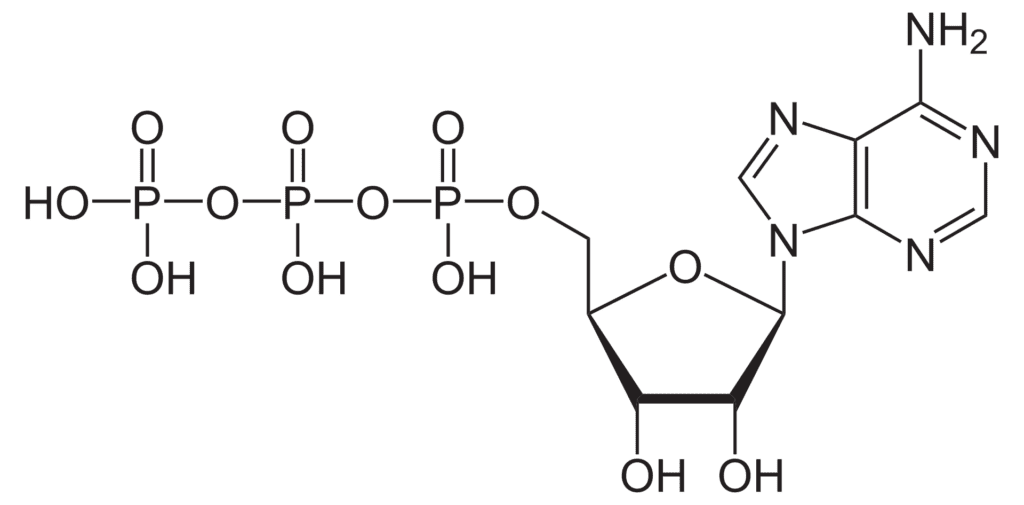Adenosine triphosphate (ATP)
Adenosine triphosphate is the fuel that drives our cells. It is a molecule that stores and releases energy so that the body can carry out things such as muscle movements, nerve signals or the formation of proteins.
The principle: when cells need energy, they use ATP. The trick: the conversion of ATP into ADP (adenosine diphosphate) releases energy that is specifically available to the organism.

ATP consists of adenine, ribose and three phosphate groups. The energy is stored in the bonds between these building blocks. When a cell needs energy, a phosphate bond is “broken”, turning ATP into ADP and releasing energy for biochemical tasks.
ATP is therefore one of the most important molecules in our body. Without ATP, it would no longer be possible to supply the cells with energy.
Further information:
- ATP and energy production in cells
- Blood tests and their relation to energy metabolism
- Mitochondrial disorders and their impact on ATP
Editorial office: X-Press Journalistenbû¥ro GbR
Gender note. The personal designations used in this text always refer equally to female, male and diverse persons. Double/triple references and gendered designations are avoided for the sake of better readability ected.

